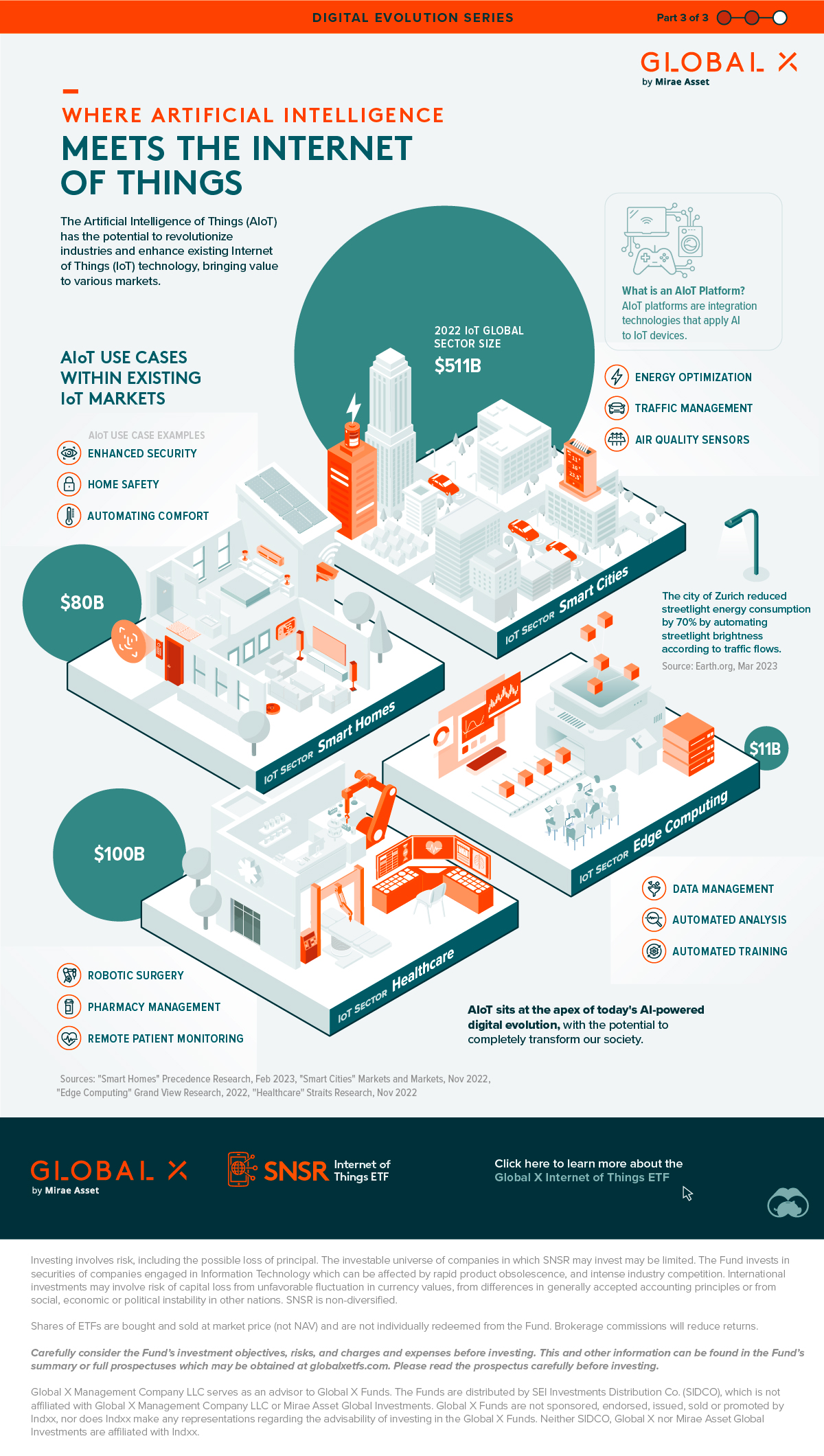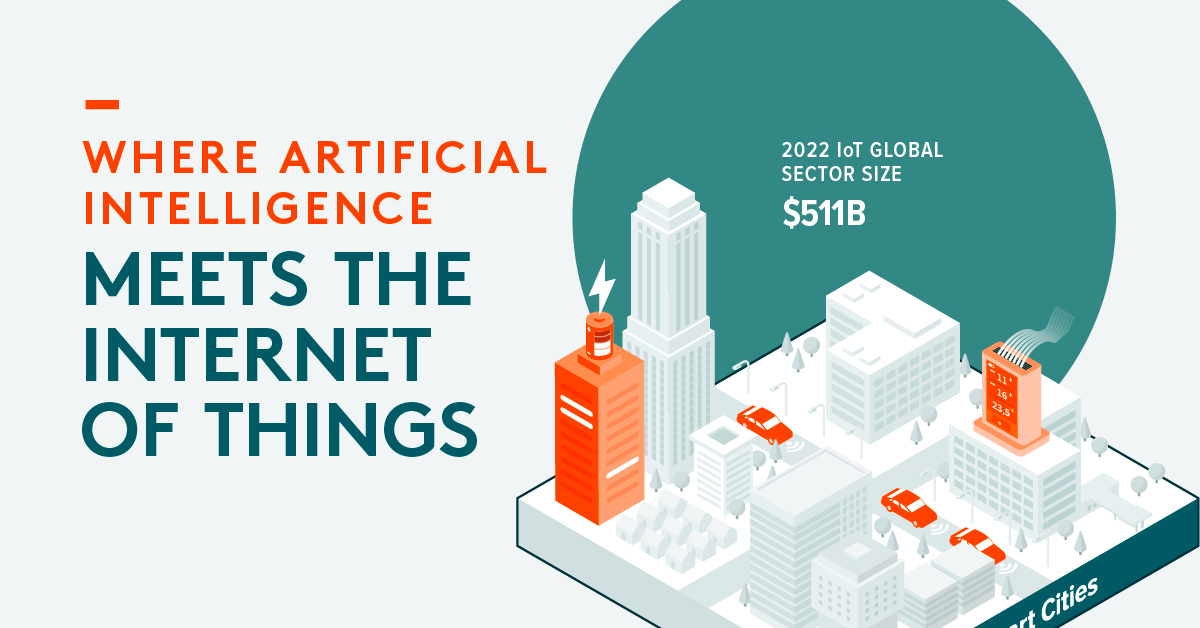Visualized: What is the Artificial Intelligence of Things?
What is the Artificial Intelligence of Things?
The convergence of artificial intelligence (AI) and the Internet of Things (IoT), known as the Artificial Intelligence of Things (AIoT), is expected to accelerate digital transformation.
In this graphic, the third and final in the Digital Evolution series sponsored by Global X ETFs, we dive into the world of AIoT platforms and zero in on their impact on certain industries.
AIoT Platforms
AIoT platforms integrate AI programming into IoT devices such as sensors, smart TVs, security cameras, or thermostats. When deployed at scale, AIoT can become capable of everything from managing city traffic flow to improving hospital remote patient monitoring.
AI algorithms enable devices to gather and analyze massive amounts of data, extract valuable insights, and make intelligent decisions. This enhances the functionality and efficiency of existing IoT devices.
Real World Applications
Here are some examples of the numerous applications of AIoT in today’s world:
Smart Homes: AIoT brings intelligence to our living spaces by enabling seamless automation, enhanced energy efficiency, and improved security. This includes smart thermostats that automatically adjust to their environment, or security cameras that detect unwanted intruders instead of cars, animals, or planned guests.
Edge Computing: AIoT can enable a computer to shunt a portion of its processing requirements to another computer on the same network. This reduces latency, enhances security, and enables quicker decision-making.
Healthcare: By integrating AI with medical devices, wearables, and healthcare systems, practitioners can gain deeper insights into patient health, improve diagnosis accuracy, and deliver personalized treatments.
Smart Cities: The capstone of AIoT applications, smart city technology empowers municipalities to optimize resource utilization, streamline traffic management, and enhance public safety. An example would be in Zurich, where sensors automate street lights to complement traffic flow, resulting in a 70% reduction in energy consumption.
Embracing a Connected World
AIoT platforms are projected to grow at a staggering compound annual growth rate (CAGR) of 37.7% between 2022 and 2027. This growth will catapult the market from just $3.7 billion in 2022 to a jaw-dropping $24.9 billion by 2027.
The continuing growth of artificial intelligence promises to evolve many industries, optimize resource utilization, and enhance decision-making. But the technology becomes truly transformative when it is applied to Internet of Things devices enabling anything from the automation of municipal infrastructure to the easy monitoring of patients within a hospital.
There has never been a better time to embark on your AI investment journey and learn more about the limitless possibilities of a connected future with the Global X Internet of Things ETF.

Learn more about the Global X Internet of things ETF (SNSR)

-

 Technology2 days ago
Technology2 days agoAll of the Grants Given by the U.S. CHIPS Act
Intel, TSMC, and more have received billions in subsidies from the U.S. CHIPS Act in 2024.
-

 Technology3 days ago
Technology3 days agoVisualizing AI Patents by Country
See which countries have been granted the most AI patents each year, from 2012 to 2022.
-

 Brands5 days ago
Brands5 days agoHow Tech Logos Have Evolved Over Time
From complete overhauls to more subtle tweaks, these tech logos have had quite a journey. Featuring: Google, Apple, and more.
-

 Technology3 weeks ago
Technology3 weeks agoRanked: Semiconductor Companies by Industry Revenue Share
Nvidia is coming for Intel’s crown. Samsung is losing ground. AI is transforming the space. We break down revenue for semiconductor companies.
-

 AI3 weeks ago
AI3 weeks agoThe Stock Performance of U.S. Chipmakers So Far in 2024
The Nvidia rocket ship is refusing to slow down, leading the pack of strong stock performance for most major U.S. chipmakers.
-

 Technology3 weeks ago
Technology3 weeks agoRanked: The Most Popular Smartphone Brands in the U.S.
This graphic breaks down America’s most preferred smartphone brands, according to a December 2023 consumer survey.






